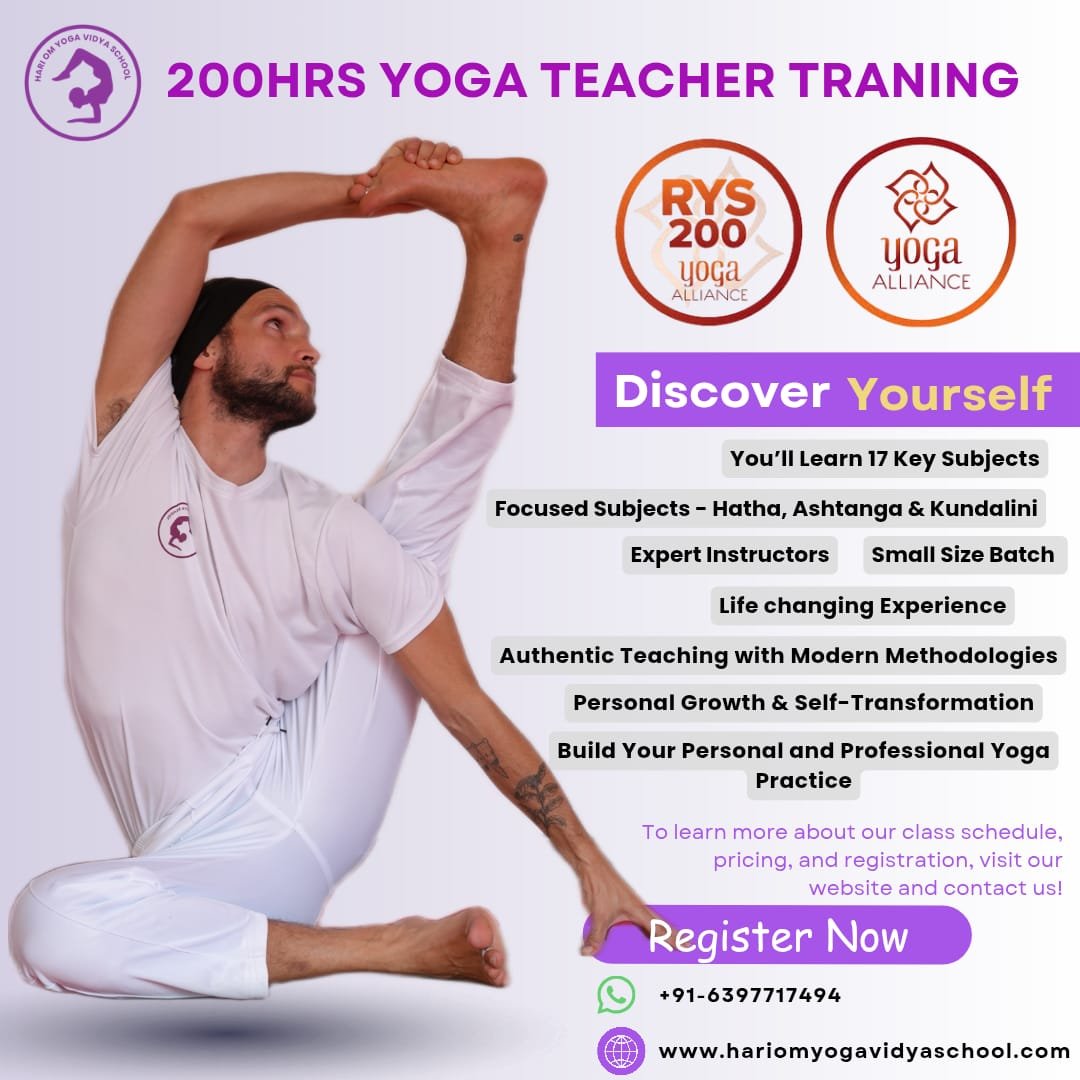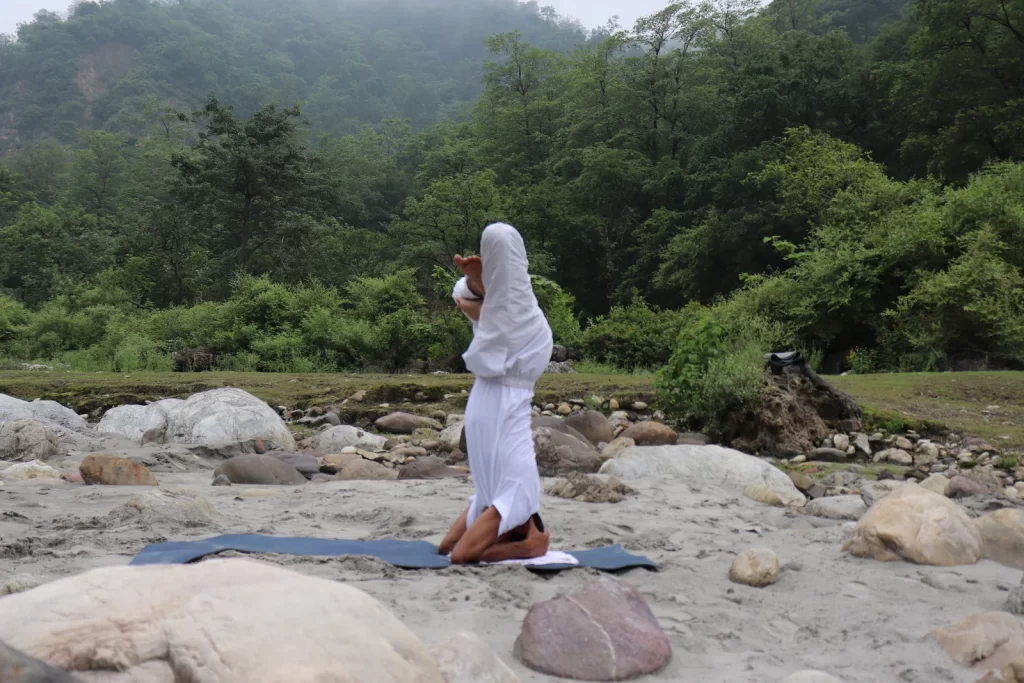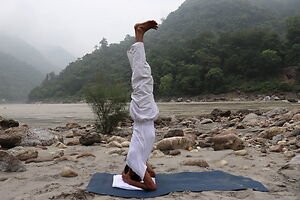Sirshasana – Head Stand Pose
So, you can now master that head stand that you were eyeing for so long. The yogic head stand is here. Many yogis will call it the royal and ruler of all other asanas. It is that pose, in which you have to invert your whole body. You will be standing on your head. The asana is an advanced pose, that you must practice under the tutelage of a yoga expert. Moreover, the asana pr pose has so many benefits, that you cannot just stop counting.
The word or terminology has come down from the Sanskrit texts. If we break it down for you, it translates into:
Shirsha meaning ‘head’.
Asana meaning ‘pose’.
Sirshasana is the only asana, in which the brain receives the maximum blood supply. Now, let us unearth the myriad aspects of this yogic pose.
How To Do Sirshasana?
You can do the pose, after some serious practice. So, when you are practicing it initially, you need to take support of an inanimate object or your peers, or the expert teacher. Here are the steps:
- You need to choose a clam and quiet place, where no one will disturb you. The reason for that is, you might suffer a serious injury, if you fall.
- You can take the Vajrasana pose, or in clear words, kneel down. Slowly, increase your concentration and focus, while bringing your head down towards the mat.
- Slowly you have to shift the body weight to the lower body and lift one leg. After the first leg goes up, your second leg also goes up.
- You have to keep your arms folded at the elbows, resting on the floor, with palms encircling the head for support. The fingers should be interlocked.
- You have to ensure after this step, that your body goes up straight.
- Stay in the inverted position for a few minutes.
- You have to practice slow inhalation and exhalation at this stage.
- After the said time has elapsed, you can start lowering the legs. Try to relax, and do not be in a hurry to bring both feet down.
- You basically have to follow the same steps, that you followed while getting into the pose, while returning to the relaxed pose.
- Sit in the Vajrasana for some time, and after that you can also lie down in the corpse pose as well.
Modifications and Variations Of Sirshasana
- If you are trying the pose for the first time, you need to take support from a wall. However, it is ideal to maintain a distance of 2-3 inches from the wall. You can try using a corner wall, where you will likely get support from two sides.
- If you are trying Sirshasana for the first time, you must start with one leg at a time. Once you start feeling more confident, you can lift both legs.
- You can also bend your legs at the knee in the beginning and try to balance your body in that manner before straightening them upwards.
- You can also take support from folded blankets and cushions for the arms, head and shoulders, if you feel that the ground is hard.
- Always understand what the body is trying to say. Do not force too hard.
- If you ignore your body’s stress signals, it can lead to irreversible injuries.
You can try several poses as listed below, when you have first, managed to stand on your head, with the support of your interlocked fingers. Then, you can sway your feet horizontally for a while, fold them at the knees, or cycle forth and backwards. This will give you ample scope to improve the pose.
While practicing this asana, you have to inhale and exhale naturally. Moreover, you can keep your eyes focussed on your nose, Nasagra Drishti.
Safety Precautions Decoded
Read More: Why Is Kundalini Yoga Dangerous? The Truth About Its Risks and Rewards
If you have just started doing the headstand or the Sirshasana, then it is imperative, that you should follow a few pointers:
- You should always do it under trained guidance.
- Practice near a wall.
- Keep a cushion for comfort, near the head.
- Lift the legs one by one.
- Maintain the pose for just a few seconds, initially.
- It takes a lot of patience, to master this pose. So, you have to take it slowly.
- Always be aware, of how you are placing your neck.
- You should refrain from doing this asana during your menstrual cycle.
- If you have Spondylitis, then you should do this pose after proper consultation.
- If you suffer from cardiac issues or vertigo, you should refrain from doing this pose.
- Also, remember, not to hold your breath, when you are doing this pose.
Who Can Do Sirshasana and Who Cannot?
If you are fit and healthy, then you can try this pose and practice until you are perfect. However, if you are not, or have any issue, you should check this out.
- All children under seven years of age, must not practice this asana. The skull is very soft at around this time, and can get injured.
- Pregnant women must not do this asana, as foetal damage can happen.
- If you are suffering from Glaucoma, you must also refrain from doing head stands.
- All those who are suffering from hypertension must avoid doing this.
- If you have migraine or neck injuries, then also you should not do this.
Benefits of Sirshasana
- If you can do this asana properly, you will be able to develop the strength in your shoulder, neck, and abdomen muscles.
- It also gives relief from headaches.
- Sirshasana will also help in the treatment of vertigo.
- If you have stomach ailments and kidney ailments, you can get rid of that as well.
- Sirshasana helps in the circulation of blood, and also aids bald people, to grow hair.
- It also aids the body and the workings of the pituitary glands.
- Sirshasana brings in relaxation.
- There are a lot of psychological benefits that you can derive from this asana. Your alertness will also increase slowly.
So, you should do this asana today, as a part of the Ashtanga Primary series.
Deepen Your Yoga Practice with Hari Om Yoga Vidya School
Located in the heart of Rishikesh, Hari Om Yoga Vidya School is a place where ancient yogic wisdom meets modern teaching techniques. As a top yoga school in Rishikesh, we are committed to providing authentic, immersive yoga education in a peaceful, spiritual setting. Recognized as one of the best yoga schools in Rishikesh, we offer structured training programs designed to help you evolve in your practice, whether you are a beginner or an experienced yogi.
If you’re searching for a yoga school in Rishikesh that focuses on holistic learning, experienced teachers, and a supportive community, look no further!
Read More: Everything You Need to Know About Kundalini Yoga Teacher Training
Explore Our Yoga Teacher Training & Retreats
At Hari Om Yoga Vidya School, we offer a range of courses tailored for different levels of practitioners:
✅ 100-Hour Yoga Teacher Training in Rishikesh – A foundational course for those looking to begin their yoga journey.
✅ 200-Hour Yoga Teacher Training in Rishikesh – An internationally recognized certification for aspiring yoga teachers.
✅ 300-Hour Yoga Teacher Training in Rishikesh – Advanced training to deepen your practice and refine your teaching skills.
✅ 7-Day Yoga Retreat in Rishikesh – A rejuvenating escape into yoga, meditation, and self-discovery.
✅ 10-Day Yoga Retreats in Rishikesh – A transformative experience that blends yoga, relaxation, and Himalayan serenity.
Join us for a life-changing experience and become part of our global yoga family! 🌿✨





